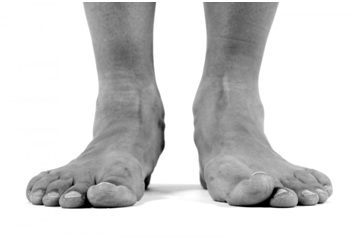
Foot and Ankle Problems that Come With Aging
It’s not uncommon for aging to take a toll on our feet. A lifetime worth of stress that we place on our feet combined with reduced production of collagen can lead to stability problems. As we age, our skin starts to thin and so does the fatty cushioning of the soles and heels. The cartilage in the joint space gradually wears down only adding to the burden.
Here are a few aging-related disorders in the foot and ankle:
Flat feet
The connective tissues — called as ligaments — stretch out as our feet age, collapsing the arch of the feet (referred to as fallen arches) and leading to postural deformity called flat feet.
During this condition, the sole of the foot comes into near-complete or complete contact with the ground. The pain, accompanied by swelling, usually starts mid-foot and increases with activity along the arch and inner ankle. It isn’t uncommon to experience associated lower back, knee and hip pain.
Moreover, flat feet alter the angle of the foot which causes overpronation — decreased stability and increased risks of ankle and foot sprains.
Shortened Achilles Tendon
Natural changes in the stability and elasticity of the ligaments and tendons are common with aging. The tendons begin to lose water during the aging process, becoming shorter and leading to a flat-footed gait. Since the tendons connect muscle to bone, it becomes harder to flex the midfoot, ankle and toes as the tendons begin to lose function. This is especially the case with the Achilles tendon that connects your calf muscles to the heel bone.
This is the reason why medical professional advise routine stretches of your Achilles tendon in the later stages of life as you’re at an increased risk of rupture or tear if the tissues are overexerted—risking the probability of injuries like tendonitis and muscle strains.
Toenail problems
Hormone production decreases as we grow older, which is why nails tend to grow slower in addition to becoming brittle and thicker as we age.
Both testosterone and estrogen stimulate keratin production, resulting in smooth appearance of our nails. The decline of these hormones coupled with loss of moisture causes discoloration, cracks and formation of uneven ridges on our nails. Other conditions like fungal infection of the toenails and inadequate circulation can also contribute to thickening of the nail.
Our Board certified podiatric physicians carry out detailed diagnosis of the patients to repair painful foot and ankle deformities arising from lower spine, knees or hips. In addition to hammertoe and bunion deformities correction, our team of professionals uses PRP and stem cells therapy to treat ankle and foot injuries.
So, if you’re looking for a state-of-the-art foot ankle institute in Miami, look no further! Get in touch with us now to schedule an appointment.
